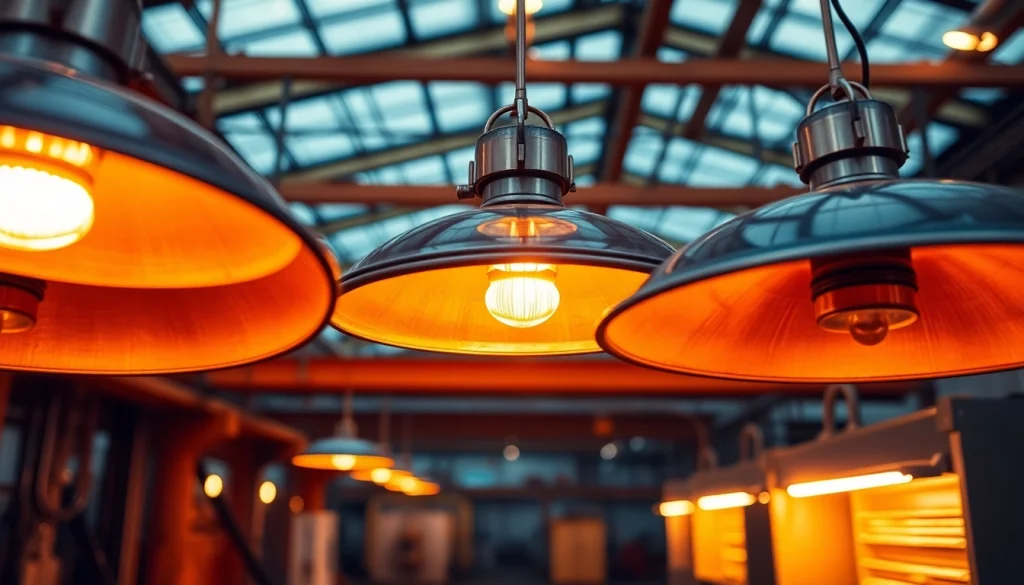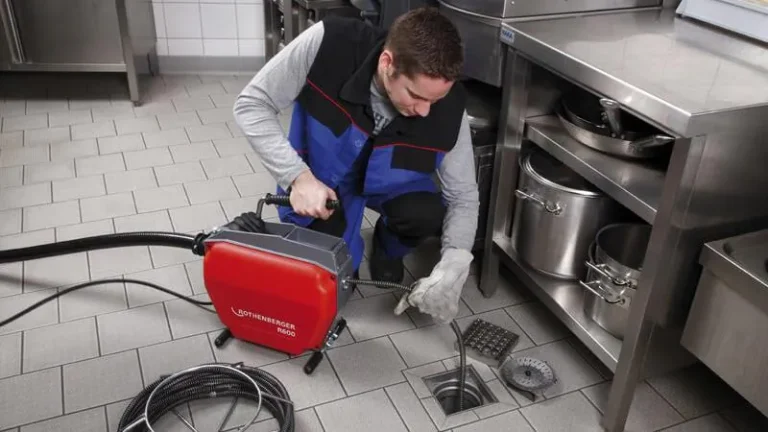
Introduction to Industrial Heat Lamps
In the relentless pace of today’s industrial landscape, efficiency and speed drive success. Industrial heat lamps, specifically designed to enhance productivity and performance, have emerged as pivotal tools in various sectors. These specialized infrared lamps not only expedite drying processes and improve product quality but also ensure significant energy savings, making them indispensable for modern manufacturing environments. If you’re seeking solutions that integrate efficiency and effectiveness, industrial heat lamps provide an innovative answer.
What are Industrial Heat Lamps?
Industrial heat lamps are specialized devices that utilize infrared radiation to provide heating directly to objects and surfaces. By transferring radiant energy, these lamps enable targeted heating, facilitating operations such as drying, curing, and warming within various industrial applications. Unlike traditional heating methods that warm the air, infrared heat lamps function by directly heating the materials or surfaces, leading to quicker and more efficient results.
Benefits of Using Industrial Heat Lamps
The adoption of industrial heat lamps brings a plethora of advantages:
- Energy Efficiency: Industrial heat lamps boast energy conversion rates of up to 96%, leading to reduced operational costs.
- Faster Processing Times: The direct heating capability allows for rapid drying and curing, enhancing overall productivity.
- Versatility: These lamps can be used across a wide range of industries, from automotive and printing to construction and food service.
- Consistent Performance: Infrared lamps provide uniform heating, ensuring consistent quality in finished products.
- Customizable Options: With advancements in technology, manufacturers can provide bespoke fixtures and control systems tailored to specific operational needs.
Applications Across Industries
Industrial heat lamps are utilized in a myriad of applications, demonstrating their versatility:
- Automotive: Used for drying paint and finishes, ensuring a flawless exterior.
- Printing: Ideal for drying inks quickly, helping to maintain the integrity of prints.
- Food Service: Used for warming food items in restaurants and catering settings.
- Manufacturing: Applied in processes ranging from metalworking to adhesive curing.
- Construction: Effective in curing concrete at faster rates, allowing for quicker project completion.
Types of Industrial Heat Lamps
Short Wave vs. Medium Wave vs. Long Wave
One of the key considerations in choosing an industrial heat lamp is understanding the different types available. They are classified based on their wave length, each serving distinct applications:
- Short Wave: These lamps emit infrared radiation with wavelengths from 1.0 to 1.5 micrometers. They deliver heat quickly and are often used in applications requiring rapid processing, like vehicle paint curing.
- Medium Wave: Operating at wavelengths between 1.5 to 3.0 micrometers, medium wave lamps are common in ink drying and curing applications. They provide a balance between speed and efficiency.
- Long Wave: Wavelengths above 3.0 micrometers characterize long wave lamps. They are typically employed in applications where gentle heat is required, such as warming surfaces without overheating them.
Specific Applications for Each Type
Short Wave Applications
Due to their intense heating capability, short wave heat lamps are particularly effective in environments with demanding curing and drying times. For instance, they are favored in the automotive industry for paint curing, and in manufacturing, they facilitate expedited processes where time is of the essence.
Medium Wave Applications
Medium wave heat lamps are ideal for applications such as adhesive curing, ink drying in printing presses, and even in food heating processes. Their balanced heating ability allows for effective yet gentle heat application, making them versatile in various manufacturing setups.
Long Wave Applications
Long wave lamps are typically employed in sensitive settings where overheating can damage the material. They suit applications like drying delicate materials, maintaining the temperature of warm foods, or providing comfort heating in service environments.
Energy Efficiency Comparison
When considering the various types of industrial heat lamps, their energy efficiency stands out as a critical factor. Short wave lamps, with their ability to heat objects almost instantaneously, minimize energy consumption during peak operations. In contrast, medium wave and long wave lamps, while efficient, are designed to provide a more gradual heating effect, catering to tasks that demand consistency and precision.
Factors to Consider When Choosing Industrial Heat Lamps
Choosing the right industrial heat lamp requires a nuanced understanding of various factors that can influence your purchase decision. Here are some critical considerations to ensure you make the best choice for your business:
Installation Requirements and Safety
Before purchasing industrial heat lamps, it is essential to consider their installation requirements. These lamps should be set up in a way that complies with industry safety standards to mitigate risks such as overheating or fire hazards. Ensure that the installation process adheres to manufacturer guidelines, and consider consulting with professionals if necessary.
Energy Efficiency and Cost Savings
Investing in energy-efficient industrial heat lamps can yield significant savings over time. Understanding the operational energy consumption and potential cost implications will guide you in selecting models that offer the best return on investment. Energy-efficient lamps not only decrease operating costs but may also qualify for energy rebates or incentives in certain regions.
Maintenance and Lifespan of Heat Lamps
Like any industrial equipment, industrial heat lamps require regular maintenance to ensure longevity and optimal performance. Investigate the lifespan of the lamps you’re considering, along with any maintenance that will be necessary. Typically, heat lamps with superior designs tend to have a longer lifespan and require less frequent replacements, further enhancing cost-effectiveness.
Innovations in Infrared Heating Technology
The evolution of infrared heating technology has been marked by dynamic advancements leading to enhanced performance, efficiency, and user experience.
Patent Technologies: Gold Reflector and Ceramic Coating
Huai’an Yinfrared Heating Technology leads the pack with innovative patented technologies that revolutionize infrared heating. Their gold reflector technology maximizes heat emission, increasing efficiency by directing more heat onto targeted areas. On the other hand, the ceramic white coating enhances the durability and performance of heating elements, optimizing heating efficiency across various applications.
Custom Fixtures and Control Systems
The importance of customization in industrial applications cannot be overstated. Yinfrared specializes in creating bespoke fixtures and control systems tailored to meet the unique requirements of different businesses. This customization ensures that each heating solution effectively addresses specific operational challenges, providing not only a product but a comprehensive solution.
Future Trends in Industrial Heating
The future of industrial heating technology points toward increased automation, improved energy efficiency, and innovations that cater to more sustainable practices. As businesses seek to optimize their operations, the integration of smart technologies will likely dominate the sector, allowing for more precise control of heating processes and better resource management.
Conclusion: Maximizing Benefits with Industrial Heat Lamps
In conclusion, the benefits of industrial heat lamps are no longer a mere convenience but a competitive necessity. From energy-efficient designs to targeted heating capacities, these tools can significantly boost operational efficiency across various sectors. As you consider the implementation of industrial heat lamps within your business framework, keep in mind the essential factors discussed, such as installation needs, energy efficiency, and maintenance protocols.
Summary of Key Advantages
Utilizing industrial heat lamps enables businesses to achieve speed, efficiency, consistent quality, and significant energy savings. Their diverse applications across different industries underscore their versatility and essential role in modern manufacturing processes.
Recommendations for Implementation
To maximize the advantages of industrial heat lamps, evaluate your specific operational needs, consult with experts, and explore options from reputable manufacturers like Huai’an Yinfrared Heating Technology. Custom solutions tailored to your business will yield the best results.
Call to Action for Business Owners
If you’re looking to enhance your industrial processes with cutting-edge heating solutions, consider the vast array of offerings from Huai’an Yinfrared. Embrace innovation and efficiency today to future-proof your operations. Together, let’s illuminate the path to enhanced productivity with industrial heat lamps.



